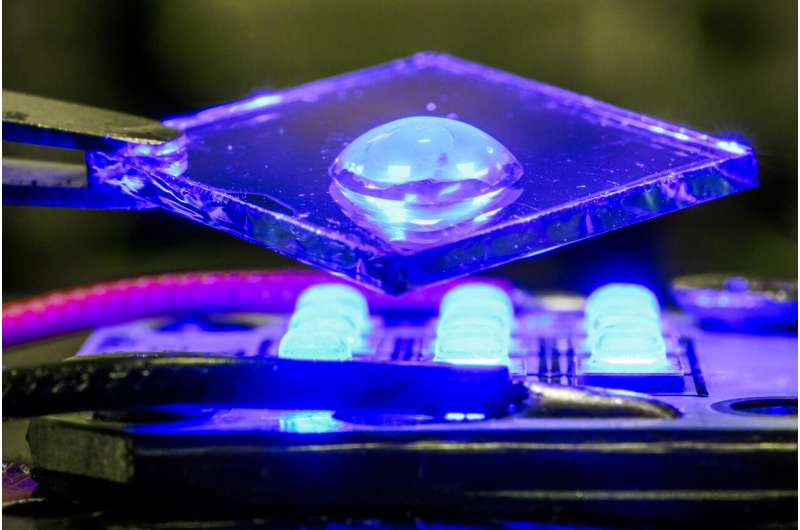Next-generation sustainable electronics are doped with air
Semiconductors are the foundation of all modern electronics. Now, researchers at Linköping University, Sweden, have developed a new method where organic semiconductors can become more conductive with the help of air as a dopant. The study, published in the journal Nature, is a significant step towards future cheap and sustainable organic semiconductors.
“We believe this method could significantly influence the way we dope organic semiconductors. All components are affordable, easily accessible, and potentially environmentally friendly, which is a prerequisite for future sustainable electronics,” says Simone Fabiano, associate professor at Linköping University.
Semiconductors based on conductive plastics instead of silicon have many potential applications. Among other things, organic semiconductors can be used in digital displays, solar cells, LEDs, sensors, implants, and for energy storage.
To enhance conductivity and modify semiconductor properties, so-called dopants are typically introduced. These additives facilitate the movement of electrical charges within the semiconductor material and can be tailored to induce positive (p-doping) or negative (n-doping) charges.
The most common dopants used today are often either very reactive (unstable), expensive, challenging to manufacture, or all three.
Now, researchers at Linköping University have developed a doping method that can be performed at room temperature, where inefficient dopants such as oxygen are the primary dopant, and light activates the doping process.

“Our approach was inspired by nature, as it shares many analogies with photosynthesis, for example. In our method, light activates a photocatalyst, which then facilitates electron transfer from a typically inefficient dopant to the organic semiconductor material,” says Fabiano.
The new method involves dipping the conductive plastic into a special salt solution—a photocatalyst—and then illuminating it with light for a short time. The duration of illumination determines the degree to which the material is doped. Afterward, the solution is recovered for future use, leaving behind a p-doped conductive plastic in which the only consumed substance is oxygen in the air.
This is possible because the photocatalyst acts as an “electron shuttle,” taking electrons or donating them to material in the presence of sacrificial weak oxidants or reductants. This is common in chemistry but has not been used in organic electronics before.
“It’s also possible to combine p-doping and n-doping in the same reaction, which is quite unique. This simplifies the production of electronic devices, particularly those where both p-doped and n-doped semiconductors are required, such as thermoelectric generators.
“All parts can be manufactured at once and doped simultaneously instead of one by one, making the process more scalable,” says Fabiano.
The doped organic semiconductor has better conductivity than traditional semiconductors, and the process can be scaled up. Fabiano and his research group at the Laboratory of Organic Electronics showed earlier in 2024 how conductive plastics could be processed from environmentally friendly solvents like water; this is their next step.
“We are at the beginning of trying to fully understand the mechanism behind it and what other potential application areas exist. But it’s a very promising approach showing that photocatalytic doping is a new cornerstone in organic electronics,” says Fabiano, a Wallenberg Academy Fellow.
More information:
Simone Fabiano, Photocatalytic doping of organic semiconductors, Nature (2024). DOI: 10.1038/s41586-024-07400-5. www.nature.com/articles/s41586-024-07400-5
Linköping University
Citation:
Next-generation sustainable electronics are doped with air (2024, May 15)
retrieved 16 May 2024
from https://techxplore.com/news/2024-05-generation-sustainable-electronics-doped-air.html
This document is subject to copyright. Apart from any fair dealing for the purpose of private study or research, no
part may be reproduced without the written permission. The content is provided for information purposes only.

Comments are closed